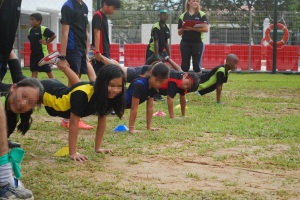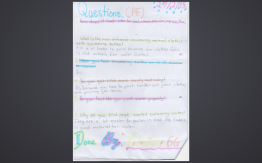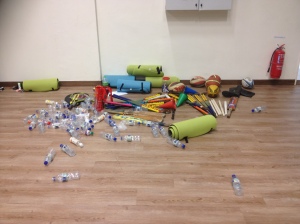Find me on my own website with much more content
Make sure you subscribe!
See you soon

Find me on my own website with much more content
Make sure you subscribe!
See you soon
(pic taken from thebookwormcentral.blogspot.com)
I’ve had a bit of time to think about this since I last wrote my blog and to tell you the truth, some of the comments that were made about my post threw me off and made me question my approach to teaching, especially in regards to the groupings of boys and girls. When I posted the original post on Facebook, I had a few people saying that this approach was incorrect and that I was promoting the boy/girl divide by doing this, which I have never intended to. However, when I posted it on twitter, a few people agreed with my approach, which made me understand that there is a matter of opinion.
I’m not saying all my classes were separated into a boys group and a girls group, it just depended on the ability. It would still be an ability split and granted there were a couple of girls who could compete with the boys, but they did not feel comfortable to be the only two girls in the majority boys group.
I questioned myself a lot on whether I was causing more harm than good, so I decided to ask my students about what they preferred. All the girls did say that they preferred to be in the girls group, mainly because the boys would not include them in the games. Girls would even come up to me during the game and say, the boys are not passing it to me. I would usually modify the game rules then and the would get the girls more involved. When I asked them about which approach they preferred, they would say that they prefer to learn in an all girls group. Yes, it is my responsibility to change this mind set and it has to be done slowly, so the girls grow in confidence and the boys are more receptive. This could be a cultural thing or something that has been accepted before I got here, but when there is opportunity to mix, I will.
However, I still believe in the circumstances that I am in and having tried a mixed approach and segregated approach, the girls excelled further in the segregated approach. During the unit, some girls would then be promoted to the boys group and would be completely comfortable. However, this would not have been possible if I did this at the start. It is just coincidence that when grouping the students into ability groups, there tends to be a more male dominant and female dominant group.
Having said all of that, I have a grade 11 class that are completely mixed and a grade 10 class that are slowly making the shift. I also have a grade 8 class where the girls were better than the boys at touch rugby, but the skills were taught separately to begin with and then they were able to complete. From my experience so far, this is not a rule for all my groups, as it also depends on the unit that I am teaching, but it is something that most of my classes naturally ended up doing, especially during the game units.

I have been teaching at my current school for three years now, teaching both the PYP and MYP curriculum. One of the major changes I had to face to my teaching was the fact that boys and girls were mixed in PE classes.
It has not been a real issue in PYP, as many of the issues do not present themselves and the abilities amongst students have proved to be relevantly equal. However, my MYP classes have been completely different. Last year, was my first year in MYP and I realised there was a real imbalance in the abilities and it was down to the gender. This was a major change, as PE classes in the UK were separate for boys and girls, and the idea of having mixed classes had both their advantages and disadvantages.
I tried for quite a while to make the integration work, however I realised the girls were not progressing as much as they should and this was mainly down to the boys. I really love the idea of boys and girls playing together, using each other’s strengths and weaknesses in their performance, and having the awkwardness of secondary school “thrown out of the window.” However, what generally happened, was that they boys would not include the girls in any game play, therefore not allowing them to progress. I modified the games and the points, so it would be better to use the girls to score more points, but it still did not yield the results. The girls would just give up and the boys would be frustrated. Obviously, there are some exceptionally talented girls who can match or even do better than the boys, but they are in the minority.
What I did this year was to teach them together in the same class, as that is what was timetabled, but I made sure the groupings were gender based. This meant I had to do more as a teacher, but this allowed me to differentiate and progress groups at different rates, depending on their ability. Over the unit, I saw much better results. The boys and girls progressed very well and when I gave them the opportunity to mix again towards the end of the unit, most of the girls were able to “hold their own.” The grade 7-9’s actually preferred the segregation, as that is where most of the awkwardness is, however the grade 10’s and 11’s wanted to mix. For their own progression, I still asked students to practice in their gender groups and I explained to the students the reasons behind my decision. At the end of the unit, it was evident to them that they had progressed much better and they were happy with what they had achieved.
Although, my plan worked and students generally progressed more than they would have in mixed groupings, there is a side of me which feels I missed an opportunity here. Like I mentioned earlier, I really like the idea of boys and girls mixing for PE, but can it really be done?
I would like to hear your thoughts and ideas, surrounding this topic.
This is a post I’ve been itching to write because of the successful lesson I had doing this last year. The grade 6 central idea focused on ‘Understanding of scientific knowledge is constantly evolving and has an impact on people’s lives’ and our PE unit was swimming.
Students had been swimming in their swimming suits with their goggles and caps, as well as having the opportunity to use different types of swimming aids. For students to understand how swimming has evolved due to the understanding of scientific knowledge, I asked the students to swim fully clothed (non swimming suit). They did not know why at the time but they started getting the idea as the lesson went on. For some reason that lesson, I had quite a few students who were not participating, so I asked them to create 5-6 interview questions about their classmates experience in the pool. This way, none participants could also understand the experience through their friend’s responses.


During the lesson, students were commenting on how difficult it was to swim and how tired they were becoming. I stood there with a rise smile on my face, rubbing my hands as the plan was working perfectly. They continued to cover the content of the lesson, but I cut the lesson shorter than usual, so we could have a class discussion.
I asked the question, how has scientific knowledge helped evolve swimming? and bam, all the students had their hands up and were sharing their answers by backing it up with their experience in the pool. As a group, we categorised the changes in swimming to several key areas (venue, safety, clothing, equipment and coaching), which led them to research further (homework task) by looking at the difference in swimming before and after scientific knowledge and how it has had an impact. We also discussed about swimming performance and how that has evolved because of scientific knowledge, but I also made reference to the type of swimming suits, as that caused some controversy in the sport itself.
Below are some examples of student’s work that was produced from the lesson. So proud of them 🙂
I just want to share a really good idea that worked for me in my class. I had already seen the idea on the internet and then my colleague had adapted and then I adapted it again to fit it to my class.
We have a health unit in each grade of MYP and it can get pretty boring for the kids and myself to teach, so I’m always looking for ways to get the kids out of the classroom. In the past 2 lessons, I taught my grade 7’s the main bones for the upper body and then played basketball to link which bones are involved in different aspects of the basketball. The second lesson followed the same format but we played kick rounders but the way to get the kicker out was to throw the soft ball at them (lower body). For them to be out, the thrower had to name which bone was hit by the ball and only then they are out.
The kids have really struggled with the terminology so we felt as a department they needed more time to get used to the terminology, so we asked the students to make a rap/song/role play/video using some of the words that we had learnt. That is still very much in the process, and as we will be looking at muscles for the next two lessons, I am looking for them to incorporate those into their original performance.

Now to test their knowledge of the bones, I grouped the students into mixed groups of 4-5 and asked them to create a skeleton using a mixture of PE materials (bats, balls, batons, wickets, cones, yoga mats and plastic bottles). As I’m involved in the eco school project at our school, this was a good way for me to get the recycled items involved (Originally, the plan was to use ONLY plastic bottles, but I didn’t collect enough). I also gave them scrap pieces of paper to use for labels of the skeleton, so they had to organise themselves well in a group to use each other’s strengths to complete this activity.

The rules of the game were simple.
You can obviously change the way you do this (my colleague had them to complete circuits and I have also seen someone use sticks) but I was very happy with the results. I did run out of time at the end, so some groups did not finish labelling but I am so proud of what they have produced